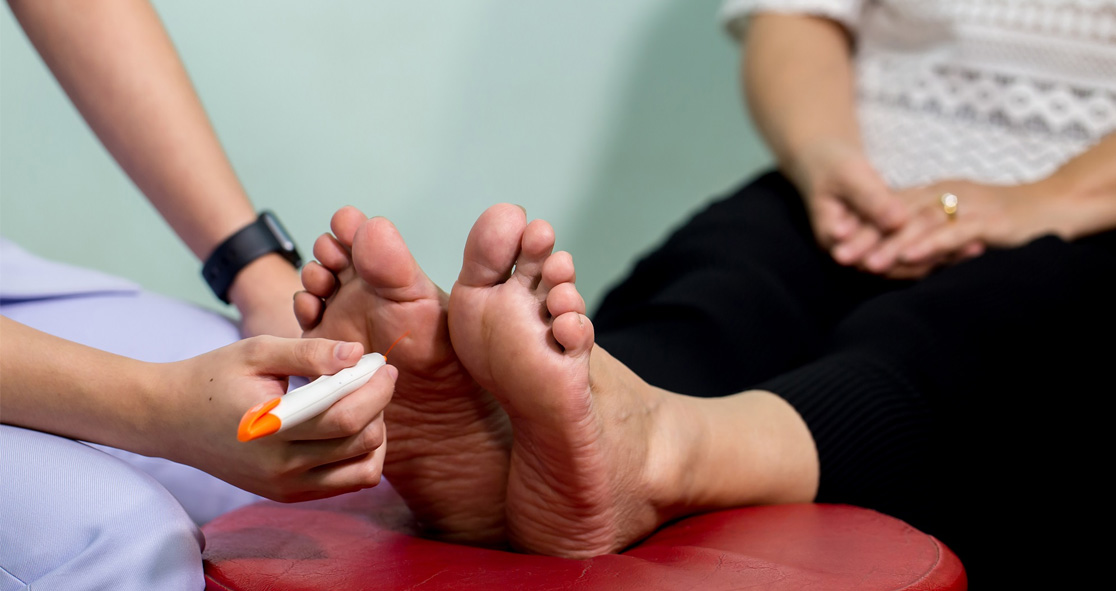An article published on MedicineNet, written by Dr. Pallavi Uttekar and reviewed by Dr. Shaziya Allarakha, has explained how people with high blood sugar levels can have diabetic leg pain, aka diabetic neuropathy.
Dr. Uttekar wrote, “Yes, diabetes, particularly a poorly controlled diabetes where the blood sugars are high, is a major cause of pain and uncomfortable sensations in the leg. Diabetic leg pain may present as a dull ache in the soles, calves, and thighs or present with pins and needles like sensation in the lower limb.”
“The pain may often disturb your sleep at night,” she added. “Some people experience stabbing pain making it difficult to walk. This happens due to altered nerve sensitivity. Therefore, for some people, a bed sheet may also cause irritation like pain. As nerve damage gets worse, symptoms can move from the feet up the legs and hands.”
She explained that diabetics experience pain in the legs due to the formation of diabetic ulcers or sores. Diabetic ulcers could be due to poor healing mechanisms in people with uncontrolled diabetes. “The high sugars and poor blood vessel health have been implicated in diabetic leg pain (neuropathy),” Dr. Uttekar wrote.
So, Is diabetic leg pain reversible?
Dr. Uttekar said, “Most diabetic neuropathies are irreversible, though you can manage them with medications. Neuropathies generally manifest after about 5 years of diagnosis of diabetes. You can delay the onset of neuropathy with strict sugar control and weight management.”
Some rare types of diabetic neuropathies include treatment-induced neuropathy of diabetes (TIND) and anorexic diabetic neuropathy,” according to Dr. Uttekar.
TIND may occur in patients who attempt to bring their sugar under control in a very short span, while anorexic diabetic neuropathy may occur with reduced appetite causing a rapid weight loss.
However, most individuals have persistent symptoms and disabilities associated with diabetic neuropathies so Dr. Uttekar says, “prevention is the best cure.”
Citing the guidelines by the American Diabetes Association (ADA), Dr. Uttekar provided a few tips for diabetics to take care of their foot and prevent neuropathy.
First, it is important to maintain normal blood sugar levels and glycated hemoglobin (HbA1c) by being compliant with the treatment advised by a doctor.
Second, if you experience foot pain with tingling and numbness, immediately see your doctor. Early treatment could help prevent such complications. For instance, if you treat a diabetic foot infection early, it can prevent gangrene and eventually amputation.
Third, see your doctor regularly for proper diabetes management and a compressive leg and foot examination. Self-examination is also important. See your doctor right away if you notice any calluses, blisters, corns, rashes, etc. For more tips on how to prevent diabetic leg pain, read the article titled “Can Diabetes Make My Legs Hurt?” published on MedicineNet.





















